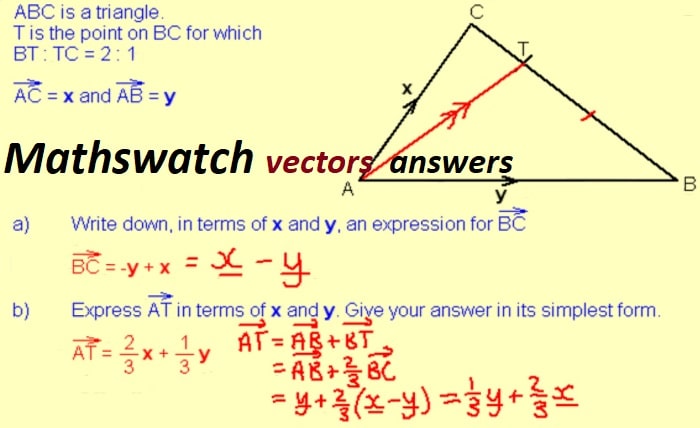Mathswatch Vectors Answers: A Comprehensive Guide

Mathswatch vectors answers are essential for students looking to understand and excel in vector mathematics. Whether you’re solving vector equations, working with magnitudes, or learning about scalar multiplication, Mathswatch vectors answers provide clarity and step-by-step solutions. In this blog, we will explore the key aspects of vectors, common questions, and strategies for mastering this topic.
Mathswatch Vectors Answers: Understanding Vectors
Vectors are quantities that have both magnitude and direction. When looking for Mathswatch vectors answers, it’s important to understand the fundamental principles of vector addition, subtraction, and multiplication. Mastering these basics will help you solve problems with confidence.
Mathswatch Vectors Answers: Vector Addition and Subtraction
One of the most common applications of mathswatch vectors answers is vector addition and subtraction. By breaking vectors into components and applying the correct formulas, you can determine the resultant vector. This technique is widely used in physics and engineering.
Mathswatch Vectors Answers: Scalar Multiplication and Unit Vectors
Scalar multiplication is another key concept covered in Mathswatch vectors answers. Multiplying a vector by a scalar changes its magnitude but not its direction. Unit vectors, which have a magnitude of one, are often used to simplify calculations and express directions clearly.
Mathswatch Vectors Answers: Finding Vector Magnitudes
Calculating the magnitude of a vector is a crucial skill in mathematics. Using Mathswatch vectors answers, students can apply the Pythagorean theorem to determine the length of a vector. This knowledge is useful in geometry, physics, and computer graphics.
Mathswatch Vectors Answers: Applications in Real Life
Understanding Mathswatch vectors answers is not just about passing exams; vectors have real-world applications. From navigation and physics to computer programming and robotics, vectors play a vital role in various fields. Mastering vectors helps students apply their knowledge practically.
Mathswatch Vectors Answers: Common Mistakes and How to Avoid Them
Even with access to Mathswatch vectors answers, students often make common mistakes. These include incorrect component breakdowns, sign errors, and misinterpretation of directions. By practicing and reviewing mistakes, students can improve their accuracy in solving vector problems.
Mathswatch Vectors Answers: Tips for Mastering Vectors
To master Mathswatch vectors answers, students should practice regularly, use visual aids, and apply vectors in real-world scenarios. Breaking down complex problems and verifying answers with multiple methods can enhance understanding and boost confidence in vector mathematics.
Conclusion
Mathswatch vectors answers provide valuable support for students learning about vectors. By understanding vector addition, scalar multiplication, and real-life applications, learners can improve their mathematical skills. Whether preparing for exams or applying vectors in practical situations, mastering this topic is crucial for success.
FAQs
1. Where can I find Mathswatch vectors answers?
Mathswatch vectors answers can be found in online study resources, textbooks, and educational websites offering step-by-step solutions.
2. How do I solve vector addition problems?
To solve vector addition problems, break vectors into components, apply the correct formulas, and use graphical or algebraic methods.
3. Why are vectors important in real life?
Vectors are used in navigation, physics, engineering, and computer graphics to represent directions and magnitudes accurately.
4. What are common mistakes when solving vector problems?
Common mistakes include sign errors, incorrect component breakdowns, and misinterpretation of direction.
5. How can I improve my vector problem-solving skills?
Regular practice, using visual aids, and reviewing Mathswatch vectors answers with step-by-step solutions can enhance problem-solving skills.





